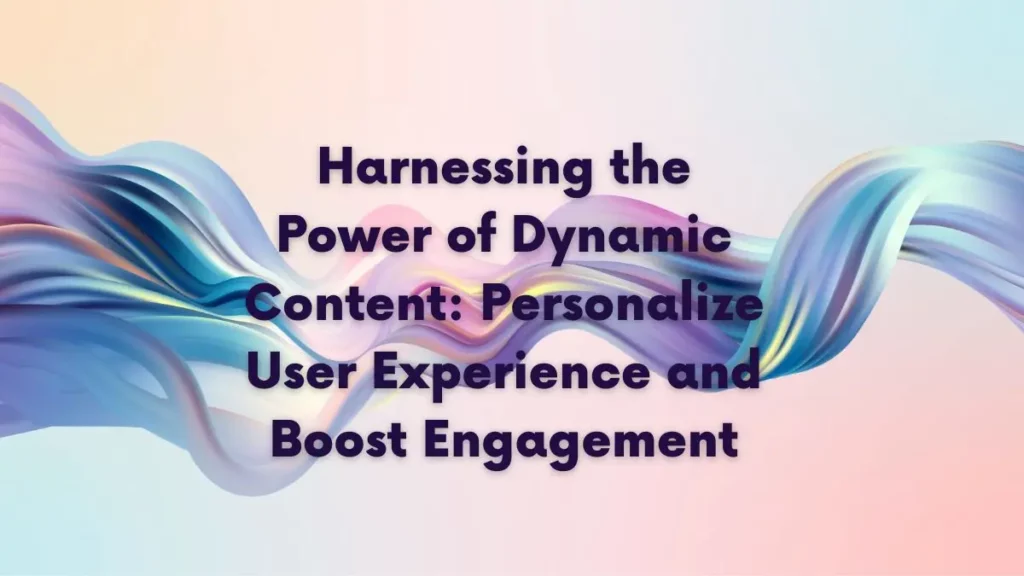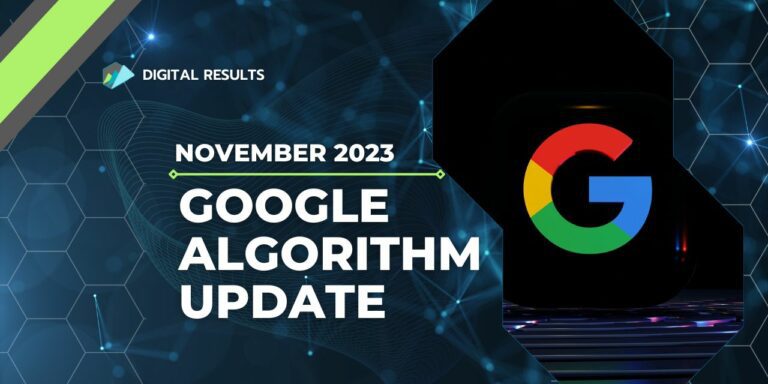
Harnessing the Power of Dynamic Content: Personalize User Experience and Boost Engagement
In today’s digital landscape, where user attention is scarce, businesses need to go the extra mile to capture and retain their audience. One effective way to achieve this is through dynamic content, a powerful tool that allows you to personalize the user experience and significantly boost engagement. By tailoring content to individual preferences and needs, businesses can create a more meaningful and impactful connection with their audience. In this article, we will delve into the world of dynamic content, exploring its benefits, strategies, implementation challenges, and future possibilities.
Understanding Dynamic Content
Dynamic web content adapts and changes based on user behavior, preferences, or other data inputs. Unlike static content, which remains the same for all visitors, dynamic range delivers personalized experiences in real time. This can include personalized recommendations, customized landing pages, adaptive website experiences, and tailored email campaigns. As a result, businesses can offer a more relevant and engaging user journey by leveraging dynamic content.
Benefits of Personalized User Experience
Personalization has become a key driver of customer satisfaction, loyalty, and business success. By delivering personalized experiences, businesses can create a sense of connection and relevance for their users. This, in turn, leads to higher engagement levels, increased conversions, and improved customer retention. In addition, users who feel understood and catered to are more likely to become brand advocates and lifelong customers.
Collecting User Data for Personalization
To effectively personalize user experiences, businesses need access to relevant user data. This can be collected through various means, such as online forms, surveys, user account information, and tracking user behavior on websites and mobile apps. It is crucial to ensure data collection methods align with privacy regulations and obtain user consent where necessary. By gathering the correct data, businesses can gain valuable insights into user preferences and behavior, facilitating personalized content delivery.
Segmentation and Targeting
Segmentation plays a vital role in personalization efforts. By dividing the audience into specific groups based on demographics, interests, and behaviors, businesses can create targeted experiences that resonate with each segment. Effective segmentation allows for more focused messaging, relevant product recommendations, and customized offers. In addition, by leveraging data collected during user interactions, businesses can refine their targeting strategies and ensure the right content reaches the right audience at the right time.
Dynamic Web Content Strategies
Businesses can adopt various strategies tailored to their specific goals and target audience to implement dynamic content successfully. Some popular techniques include:

Dynamic Product Recommendations
Businesses can dynamically recommend products or services that align with individual preferences by analyzing user behavior and purchase history. This approach enhances the user experience by showcasing relevant offerings and increasing the chances of conversion.
Personalized Email Campaigns
Email marketing remains a powerful channel for engaging users. By leveraging dynamic web content, businesses can create personalized messages, product recommendations, and exclusive offers that resonate with individual recipients. This level of customization drives higher open rates, click-through rates, and conversions.
Customized Landing Pages
When users arrive on a website, presenting them with a generic landing page may generate a different impact. By creating customized landing pages that dynamically adapt to user preferences and demographics, businesses can deliver a more personalized and engaging experience, ultimately increasing conversion rates.
Adaptive Website Experiences
Static websites often need help to cater to the diverse needs of individual users. Dynamic content lets businesses personalize website experiences by showcasing content, offers, and recommendations that align with user preferences and behaviors. This adaptability helps companies to create a seamless and engaging user journey.
Real-Time Personalization
Real-time personalization takes dynamic content to the next level by delivering tailored experiences. By leveraging real-time data, businesses can understand user intent and behavior as it happens, allowing for quick content customization. This can include dynamically changing website elements, adjusting product recommendations based on browsing patterns, or providing personalized messaging during live chat interactions. Real-time personalization enhances the user experience by creating a sense of responsiveness and relevance.
A/B Testing and Optimization
To ensure the effectiveness of dynamic content strategies, businesses need to conduct A/B testing and optimization. A/B testing involves comparing two versions of a web page, email, dynamic content examples, or other content to determine which performs better regarding engagement, conversions, or other metrics. Businesses can identify the most effective approaches and optimize their strategies by testing different dynamic range variations. This iterative process of testing and refinement helps companies continuously improve the impact of personalized experiences.
Privacy and Data Security Considerations
While personalization relies on user data, businesses must prioritize privacy and security. It is essential to obtain proper consent and communicate how user data will be used. Companies should adhere to relevant privacy regulations, such as the General Data Protection Regulation (GDPR) or the California Consumer Privacy Act (CCPA), and implement robust data protection measures. Building trust with users by demonstrating a commitment to their privacy is crucial for successful dynamic content implementation.
Measuring Success: Key Metrics and Analytics
Businesses need to define and track relevant metrics to gauge the effectiveness of dynamic content and personalization efforts. Key metrics may include engagement metrics (such as time spent on the site, page views, or bounce rates), conversion rates, click-through rates, or revenue generated. Analytics tools like Google Analytics or Adobe Analytics can provide valuable insights into user behavior, content performance, and conversion funnels. As a result, businesses can refine their strategies and optimize their dynamic content initiatives by analyzing data and making data-driven decisions.

Overcoming Challenges in Dynamic Website Personalization
Implementing dynamic content can come with specific challenges. However, some common hurdles include the following:
Technical Considerations and Limitations
Implementing dynamic content may require technical expertise and infrastructure. Businesses must ensure that their websites or platforms can support dynamic content delivery, handle real-time data processing, and provide a seamless user experience across different devices and browsers.
Managing Content Creation and Updates
Dynamic content requires ongoing content creation and updates to stay relevant and practical. This can involve creating personalized messaging, curating product recommendations, or designing adaptive website elements. Businesses must establish streamlined processes and allocate resources to ensure timely and accurate content updates.
Scaling Personalization Efforts
As businesses grow and expand their user base, scaling personalization efforts can be challenging. Maintaining a high level of personalization across a large audience requires robust infrastructure, data management systems, and automation tools. Therefore, scalability considerations should be incorporated into the initial implementation plan to accommodate future growth.
Tips for Effective Dynamic Content Creation
Creating impactful dynamic content requires careful consideration and execution. Here are some tips to enhance the effectiveness of your active content initiatives:
- Compelling Copywriting Techniques: Craft persuasive and personalized messaging that speaks directly to the individual user, highlighting the benefits and relevance of your offering.
- Design Best Practices for Dynamic Content: Ensure your dynamic content is visually appealing, easy to navigate, and consistent across different devices and screen sizes. Pay attention to color schemes, typography, and user-friendly layouts.
- Incorporating Visual Elements and Multimedia: Enhance the user experience by incorporating relevant images, videos, or interactive elements that align with the personalized content. Visuals can significantly increase engagement and convey information more effectively.
The Future of Dynamic Content and Personalization
The landscape of dynamic content and personalization continues to evolve rapidly. Here are some emerging trends and technologies that will shape the future:

- Artificial Intelligence (AI) and Machine Learning (ML): AI and ML algorithms can analyze vast amounts of user data to generate more accurate personalization insights and predictions. This technology will enable businesses to deliver even more personalized and relevant experiences.
- Voice-Activated Personalization: As voice assistants become more prevalent, businesses must adapt their dynamic content strategies to cater to voice-activated interactions. Personalized recommendations and content delivery through voice commands will become increasingly important.
- Hyper-Personalization: The future of personalization lies in hyper-personalization, where content is tailored to an individual’s context in real-time. Location, weather, time of day, and user intent will all play a role in delivering hyper-personalized experiences.
Closing Notes
Dynamic content offers businesses a powerful tool to personalize user experiences and enhance engagement. Companies can deliver tailored content that resonates with individual users by leveraging real-time data, segmentation, and targeted strategies. The benefits include increased user satisfaction, higher engagement rates, improved conversions, and enhanced customer loyalty.
However, implementing dynamic content has challenges, including technical considerations, content management, and scalability. Overcoming these challenges requires a strategic approach, investment in technology, and continuous optimization through A/B testing and data analysis.
As the future unfolds, integrating AI, voice-activated personalization, and hyper-personalization will further transform the landscape of dynamic content and personalization, creating even more tailored and impactful user experiences.
Businesses that harness the power of dynamic content and prioritize personalization will be well-positioned to succeed in the digital era, capturing the attention and loyalty of their audience in an increasingly competitive landscape.
Digital Results is happy to help with your dynamic content strategy and digital marketing needs. Get in touch for a free 30-minute consultation—one of our experts will walk through how we can help optimize your search engine optimization (SEO).

Ready to Grow Your Search Engine Results?
Let Digital Results assist you in your SEO strategy and help
deliver the search engine results you need.






